NFL Network's Mike Mayock is set to cover his 11th NFL Scouting Combine, and prior to the prospects hitting the field in Indianapolis, Ind. the analyst participated in a conference call with the media.
During his extensive remarks, he touched on a variety of subjects, including individual analysis of players as well as what position groups to keep an eye on throughout the week.
Check out the highlights from his remarks below.
Q: You mentioned the wide receiver group being pretty good this year. Compare it to last year. 15 went in the first three rounds last year, including five in the first. Could we see similar numbers this year from this group?
Mike Mayock:"In the last five years, there's been an average of 13 wide receivers that go in the first three rounds, and an average of 3.8 in the first round. Now, more importantly, last year's wideout group was historically tremendous. All five first-round picks were highly productive. In the second round you have Jordan Matthews, Davante Adams, Allen Robinson, [Jarvis] Landry. In the third round you had Josh Brown, fourth round Martavis Bryant. It wasn't just the guys up top, it was the depth throughout. So I think there are reasons in today's NFL why rookie wide receivers can come in and play well early. Real quickly, these kids have been used to catching the football forever. Everything is a pass-first league now. Number two, with the emphasis on the five-yard rule, the smaller wideouts are getting off press coverage, they know after five yards they can run routes with impunity. Finally, the big-bodied wideouts, they don't really have to be route runners. They're 6'5", 230. With the advent of the back shoulder throw, they can be productive day one. I think the league is set up to be productive more so than ever for rookie wide receivers and tight ends. This particular class, Kevin White, Amari Cooper, DeVante Parker are consensus top-20 picks."
Q: Do you feel that talent evaluators in general put the 40 time in perspective pretty well considering all the attention that it gets every year? Are there specific people you're thinking of this year who you really do feel, if you see a fast time or a surprisingly slow time, that could really affect them?
Mike Mayock:"Good questions. Here is my take on the whole thing. I think more mistakes are made because of the measurable piece of the combine than anywhere else. You get a little excited with height, weight, speed. Sometimes you want to allow the numbers to outweigh the playing tape. From my perspective, I always say, fast guys run fast, slow guys run slow. It's only a story when the opposite happens. You watch a guy on tape, a lot has to do with the wide receivers and corners, the skill position players obviously. For instance, my number one wide receiver is Kevin White from West Virginia. I think I know what Amari Cooper is, what a great football player he is. But I have Kevin White above him because I think he's got a higher ceiling. I think his potential is greater. He's 6'3", 219 pounds. But I want to know what he runs. I have all over my notes that he's a 4.5 flat guy. If he's a 4.58, I have to go back and look at my notes again. I have notes about, check out lower body explosion, that translates to the vertical or broad jump. I want to check the short shuttle. There are a bunch of guys I have notes on checking their 40s. Dante Fowler, I want to see how he compares to Justin Houston in 2011 because I think they have similar body types. The whole thing about the numbers, what the best evaluators do, they use the numbers for a cross-check. So if a fast guy runs fast, check. Slow guy runs slow, check. Should jump about 37 inches, check. However, whenever you find something that doesn't match up to the tape, that should be the red flag to make you go back and watch some more."
Q: What to you is the hardest position to evaluate? If the answer is quarterback, what is then the second hardest position for you to evaluate, and why?
Mike Mayock:"Good question. I think the evaluation job is changing because of what's coming out of college today on both sides of the line of scrimmage. However, to answer your question, I think quarterback is harder than ever. Quarterback was hard anyway just because of the intangibles. How hard a worker is he? How much does the game mean? Is he the first guy in every morning? Can he translate what he sees on tape out to the field in 2.3 seconds? Quarterback is the hardest evaluation today because the systems are so diametrically different from college to the NFL. It's getting to the point where you're almost grateful when you get someone like Jameis Winston who comes out of the pro style. So quarterback by far is the hardest. For me, it's a good question, because I talk to scouts all the time, we all kind of had different positions that are hard to do. I find linebacker hard to do, especially the off-the-line linebacker. It's easy to see the edge guys. The inside, off-the-line 4-3 guys are difficult because they might be coached differently. Get downhill, get downhill. He might be coached that he has a backside B gap, and he has to wait to make sure that cut back doesn't come. Unless you really know the system the kid is coming out of, you don't want to be unfair to him. So sometimes I think those linebackers for me are hard to do."
Q. You already sort of broke down the White versus the Cooper scenario at wide receiver. Curious whether you think that either of those guys, if they went to the Raiders at No. 4, could sort of have the kind of production we saw from the first few wide receivers last year, and I wonder if you could in retrospect look at the Raiders' draft class last year and speculate what it would mean to the franchise if they could put another one like that back to back.
Mike Mayock:"Sure. Obviously I was a Khalil Mack guy, and I think everybody had to be impressed with the rookie year he had and the way you can build with him as a foundation coming off the edge for years to come. I had Derek Carr I think at No.20 on my top 100, and the further we got into the process the more I liked the kid, and I think he's a guy you build your offense around. [Gabe] Jackson if I remember correctly was a third-round pick and he was one of those big, square, tough guards that I really like, and I think he played well. So I think they did exceptionally well at the top end of the draft last year. And as far as the wide receiver position is concerned, I would expect that at No.4 that's where they ought to be targeting, and again, I think they've got to grind the heck out of Kevin White, Amari Cooper and DeVante Parker. I think Cooper from Alabama has got the highest score. In other words, I think he's the safest pick of that group. Really good route runner, had over 100 catches last year, reminds me of some of those wide outs that played on the Greatest Show on Turf with Dick Vermeil in St. Louis, Cory Holt, for example, that type of wide receiver, whereas the other two, Kevin White and DeVante Parker, are bigger bodied guys where you can throw it up and they can win jump balls. I would imagine that one of those three guys are going to be their pick, and I think any one of the three could be highly productive."
**
The NFL Scouting Combine begins Tuesday, so take a look back at some current Raiders during their time in Indianapolis.

LB Khalil Mack (2014)

LB Khalil Mack (2014)

QB Derek Carr (2014)

QB Derek Carr (2014)

G Gabe Jackson (2014)
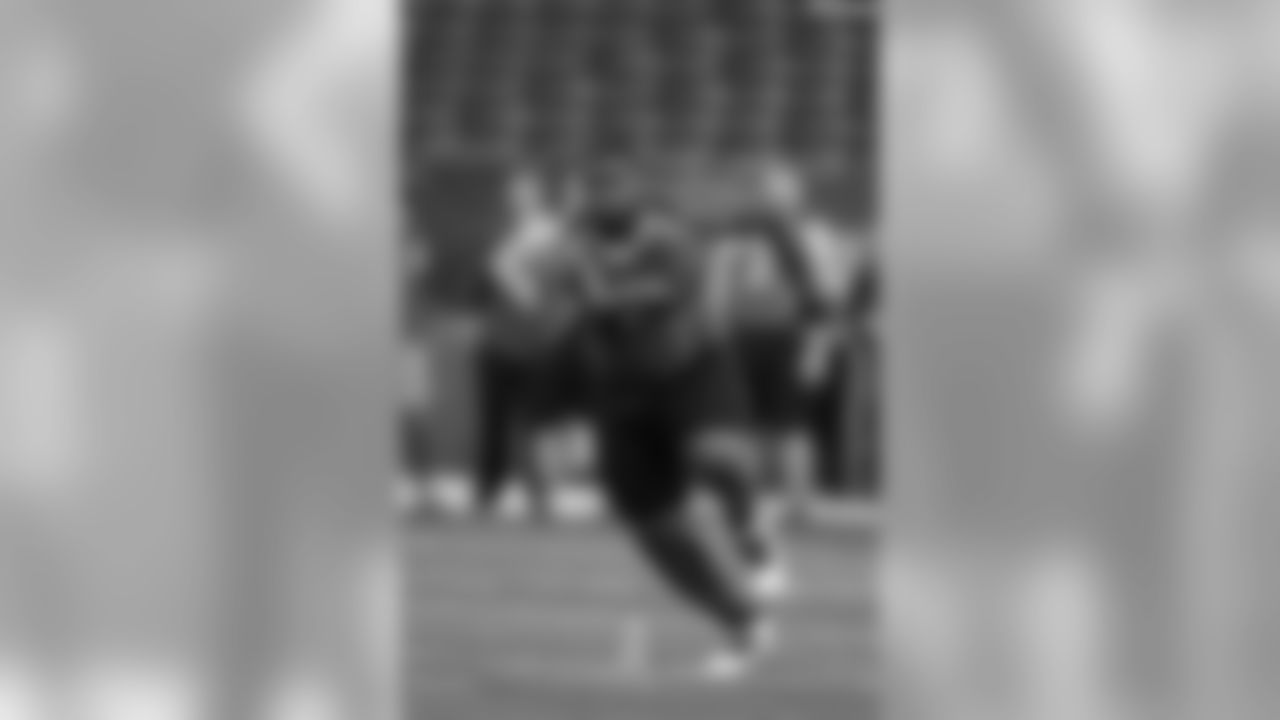
G Gabe Jackson (2014)
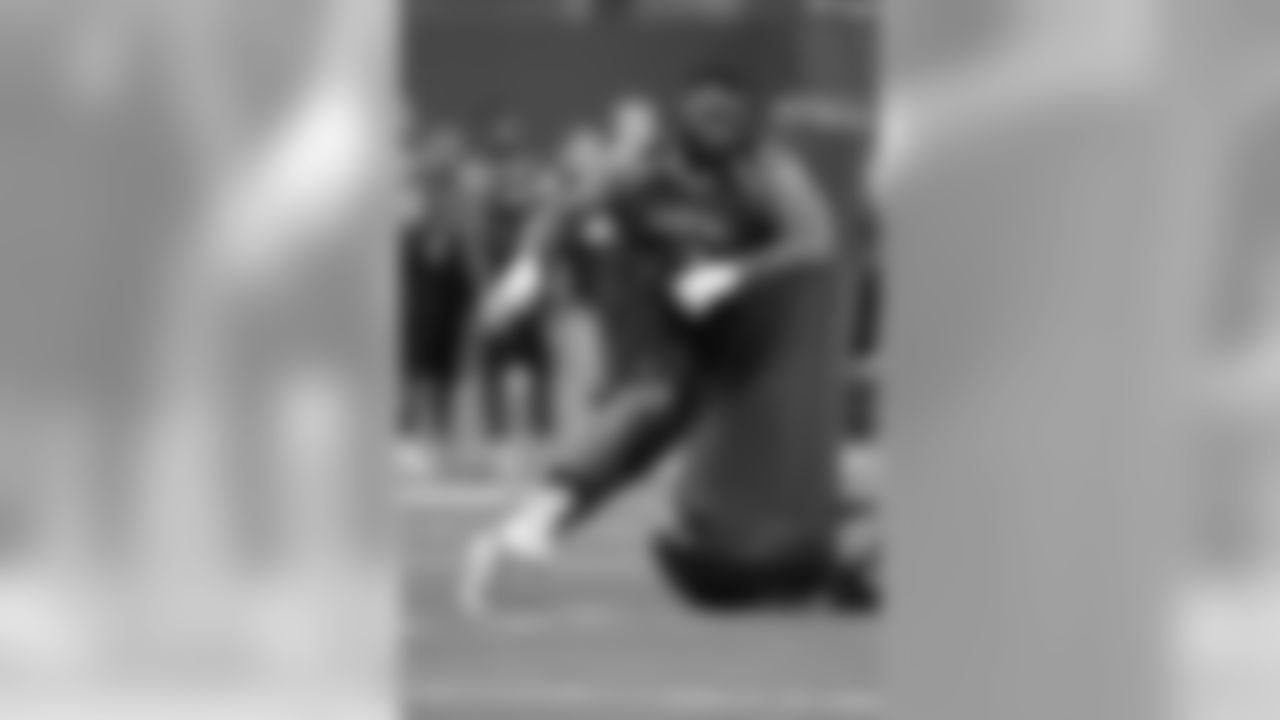
DT Justin Ellis (2014)

DT Justin Ellis (2014)
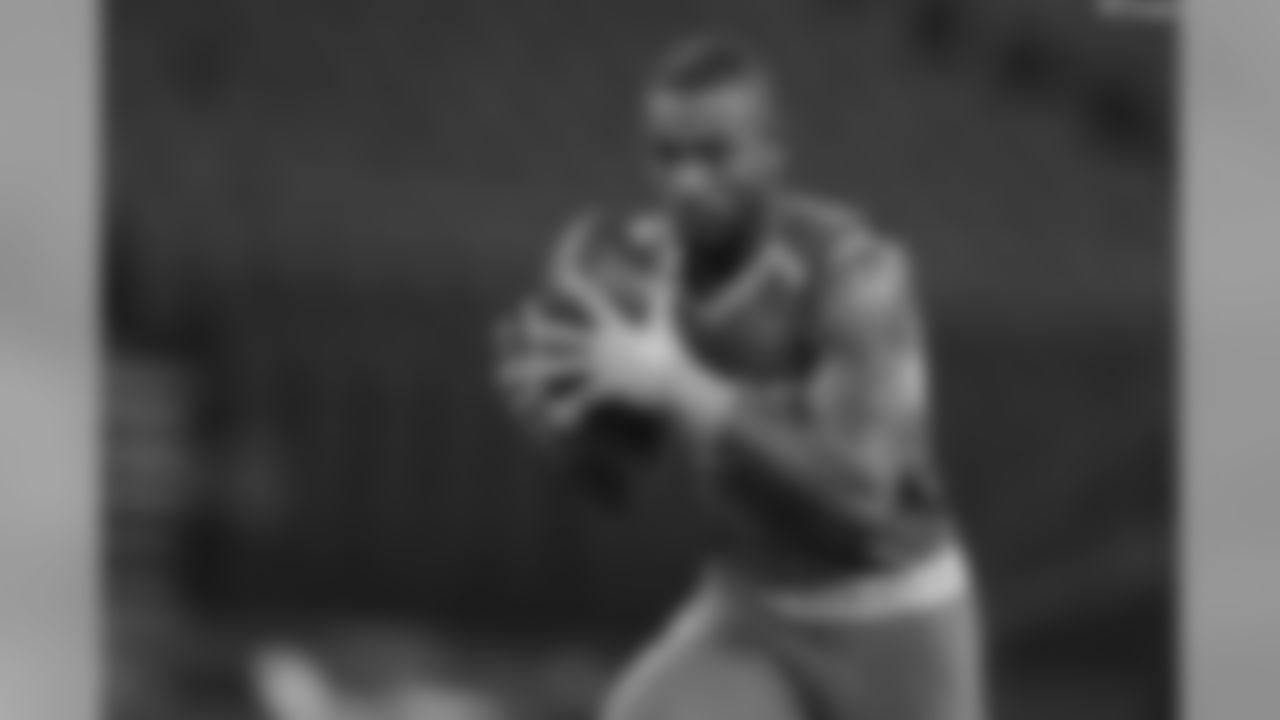
CB Keith McGill (2014)

CB DJ Hayden

T Menelik Watson (2013)
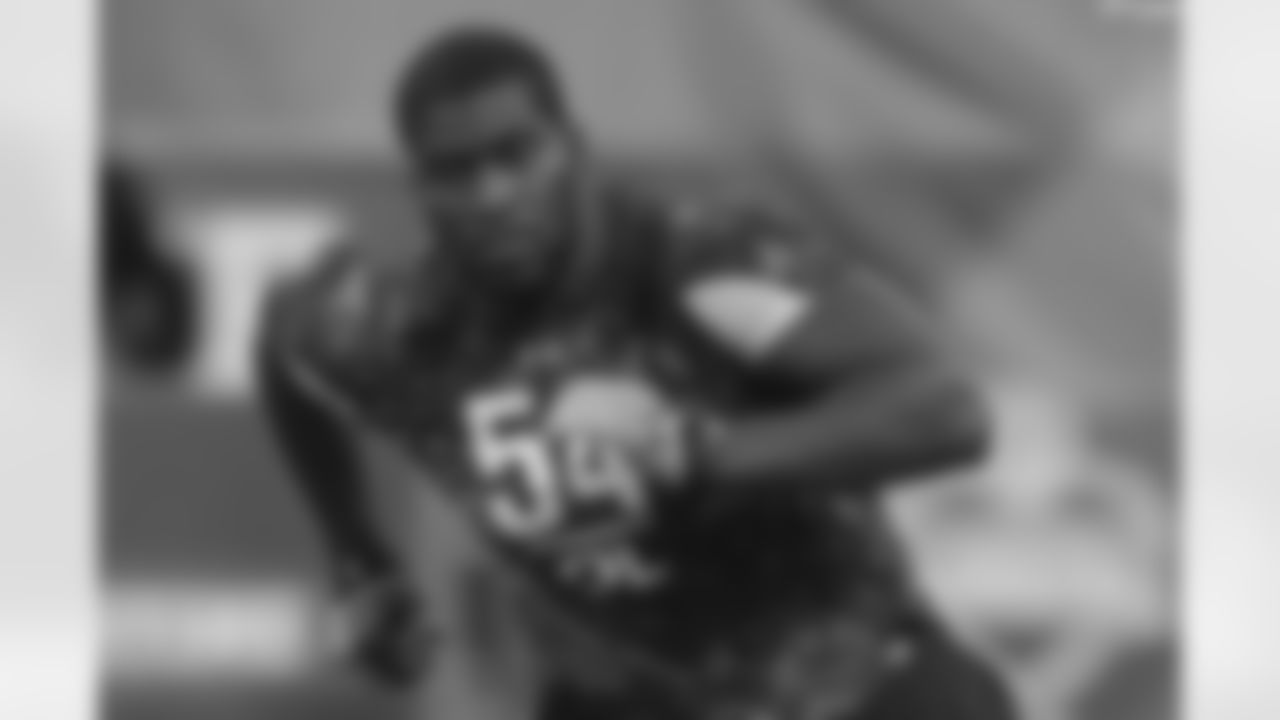
T Menelik Watson (2013)
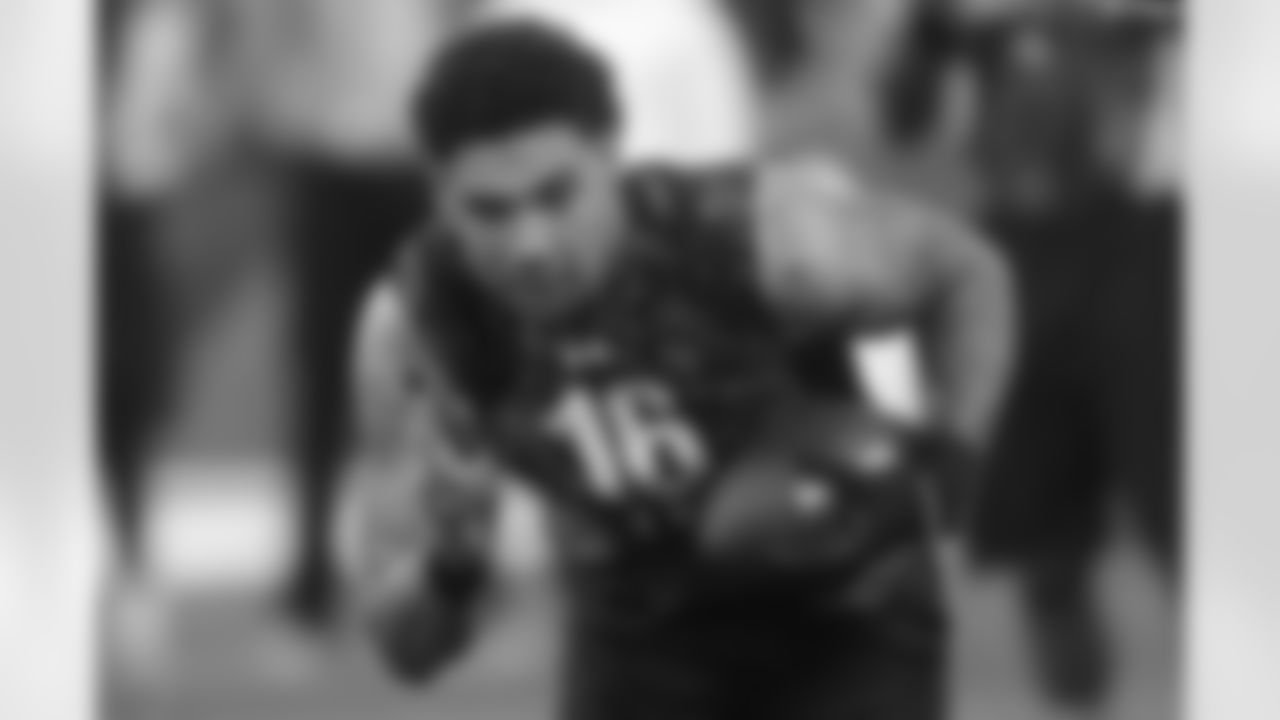
TE Mychal Rivera (2013)
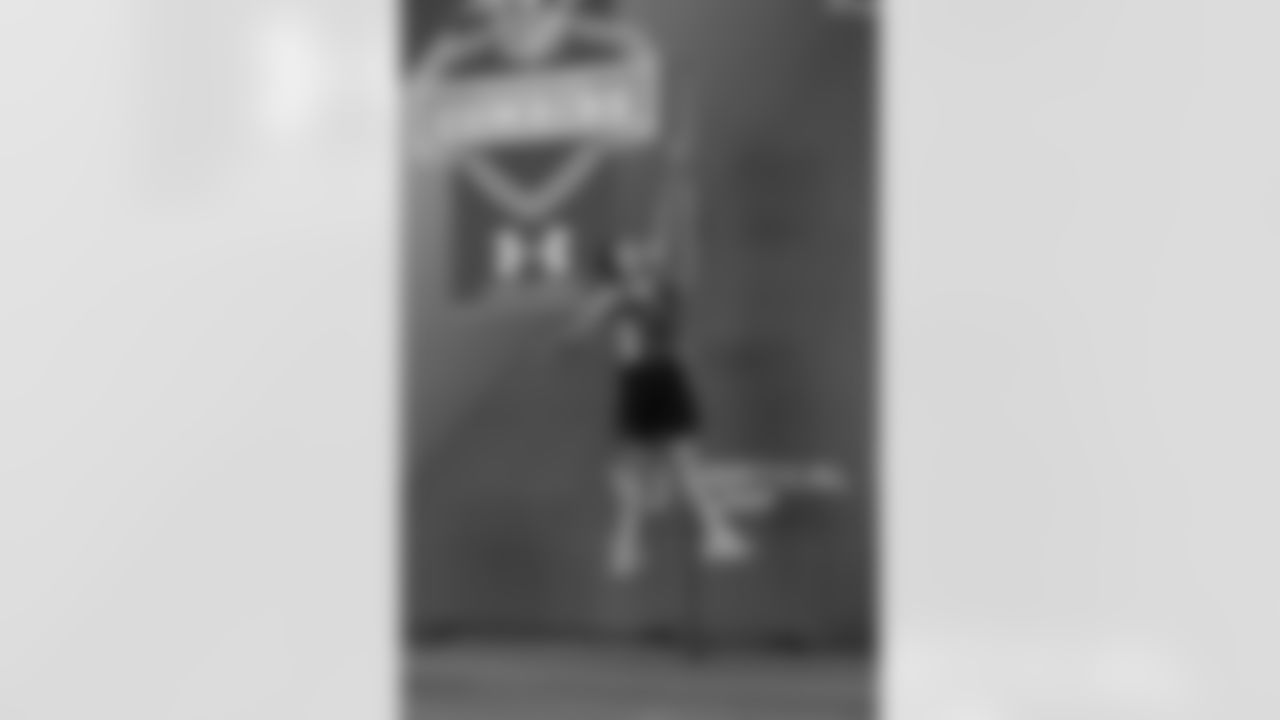
TE Mychal Rivera (2013)

T Tony Bergstrom (2012)
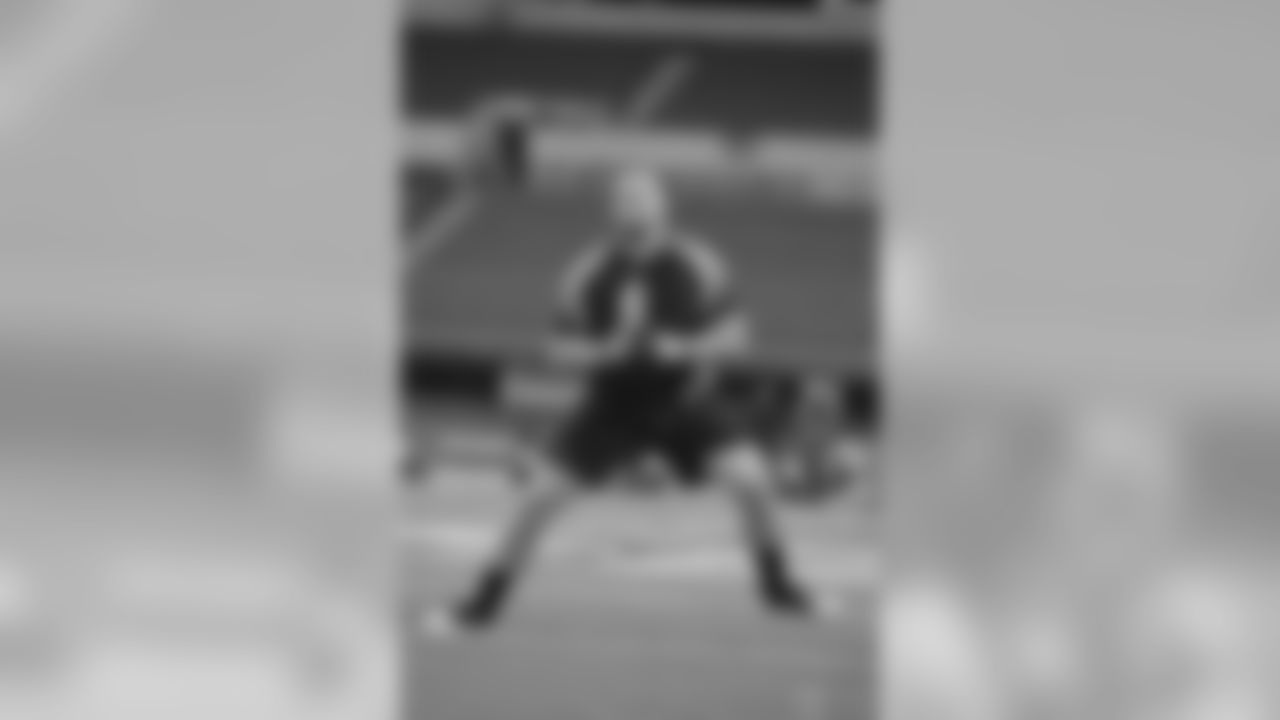
T Tony Bergstrom (2012)
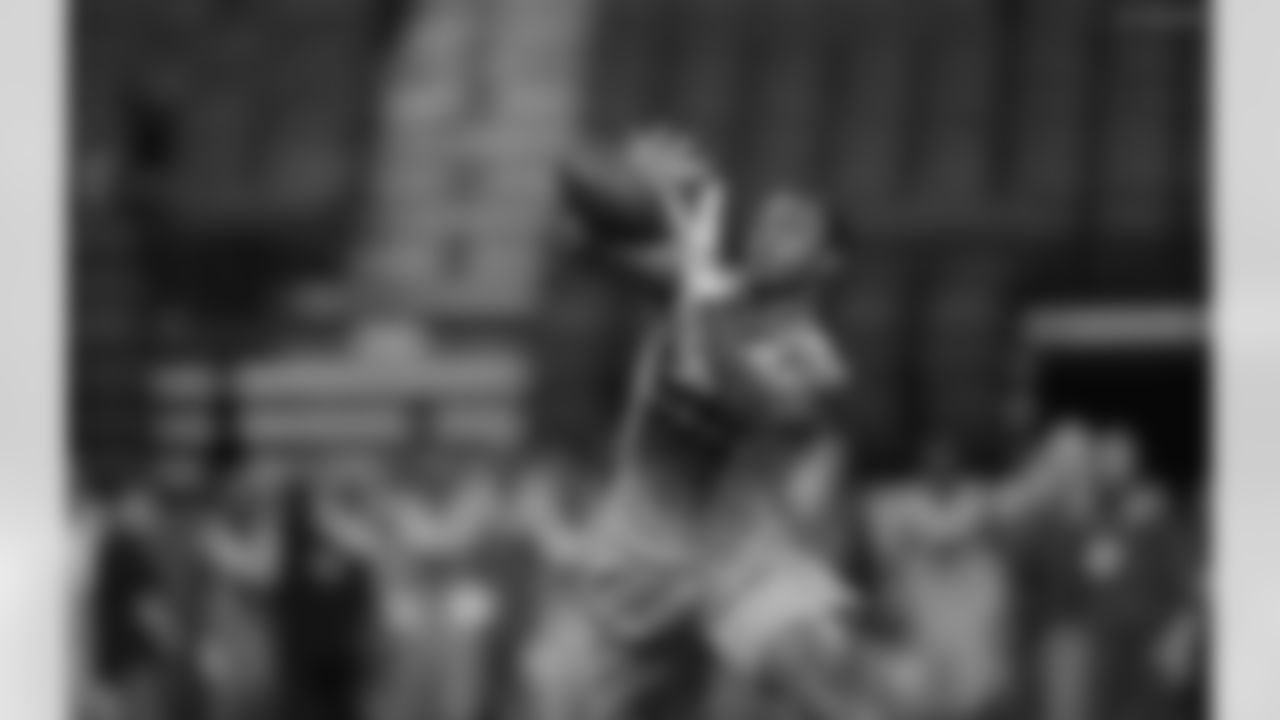
WR Amari Cooper (2015)
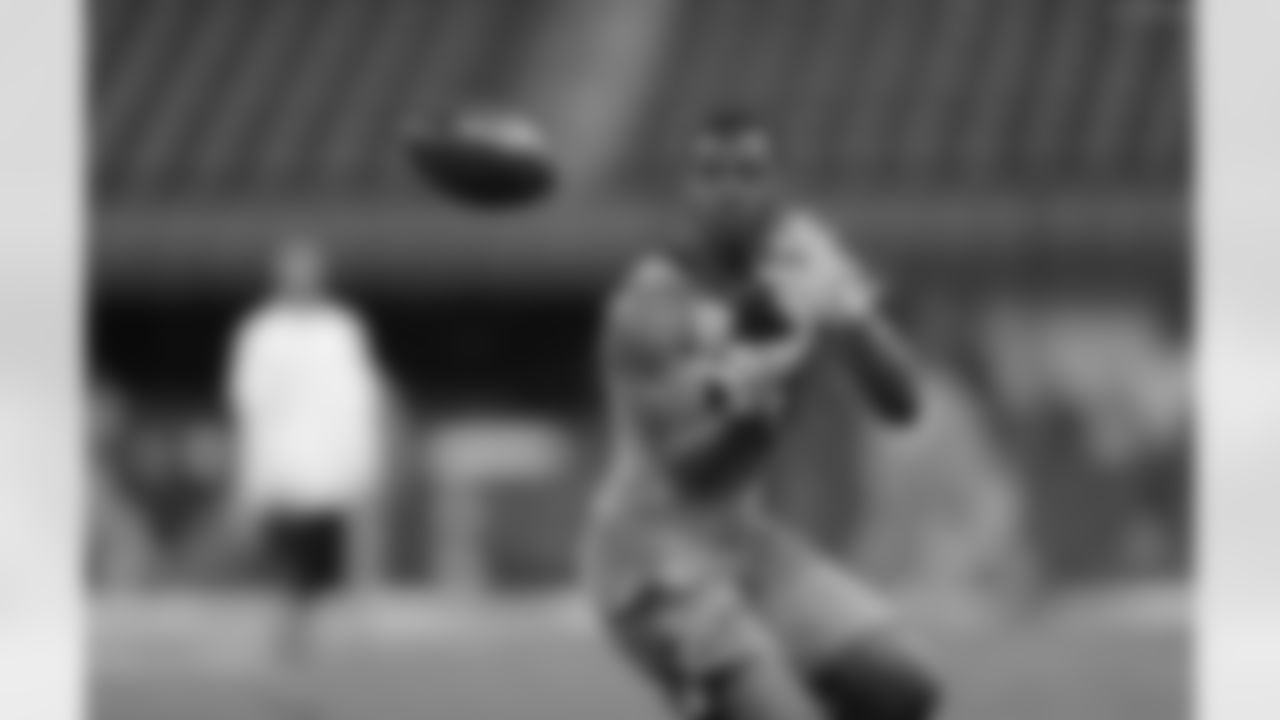
WR Amari Cooper (2015)
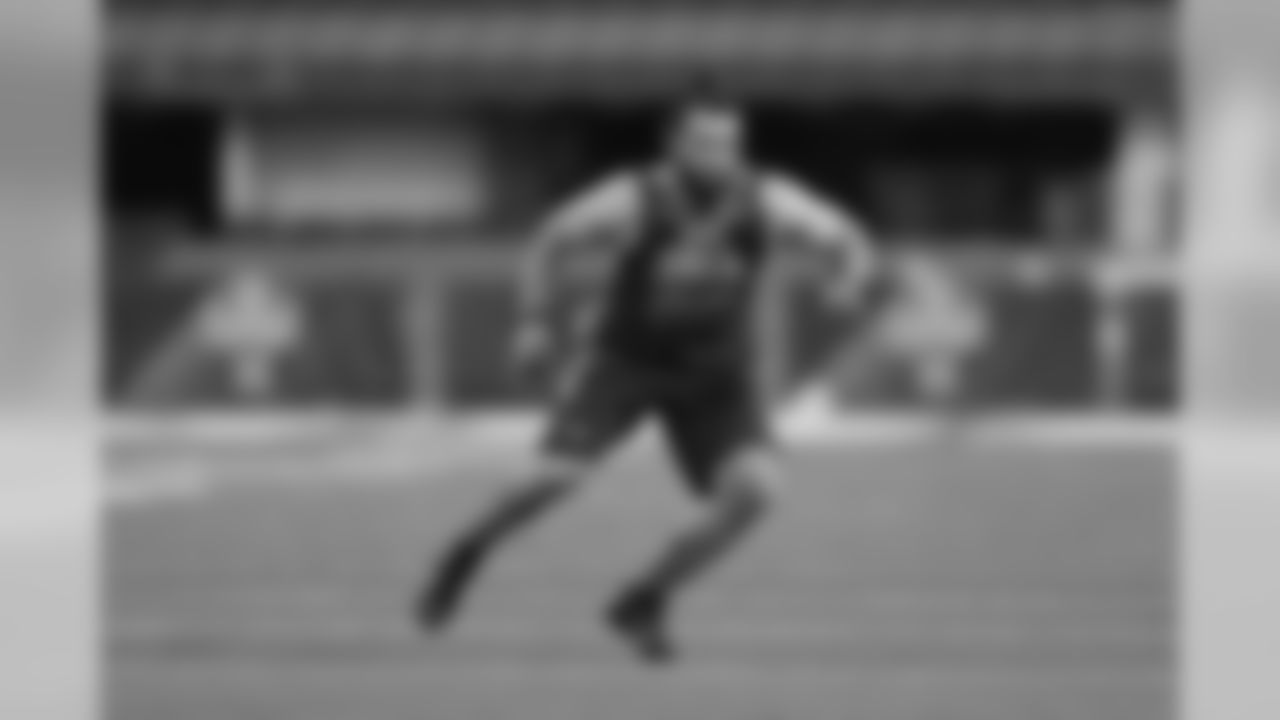
LB Ben Heeney (2015)
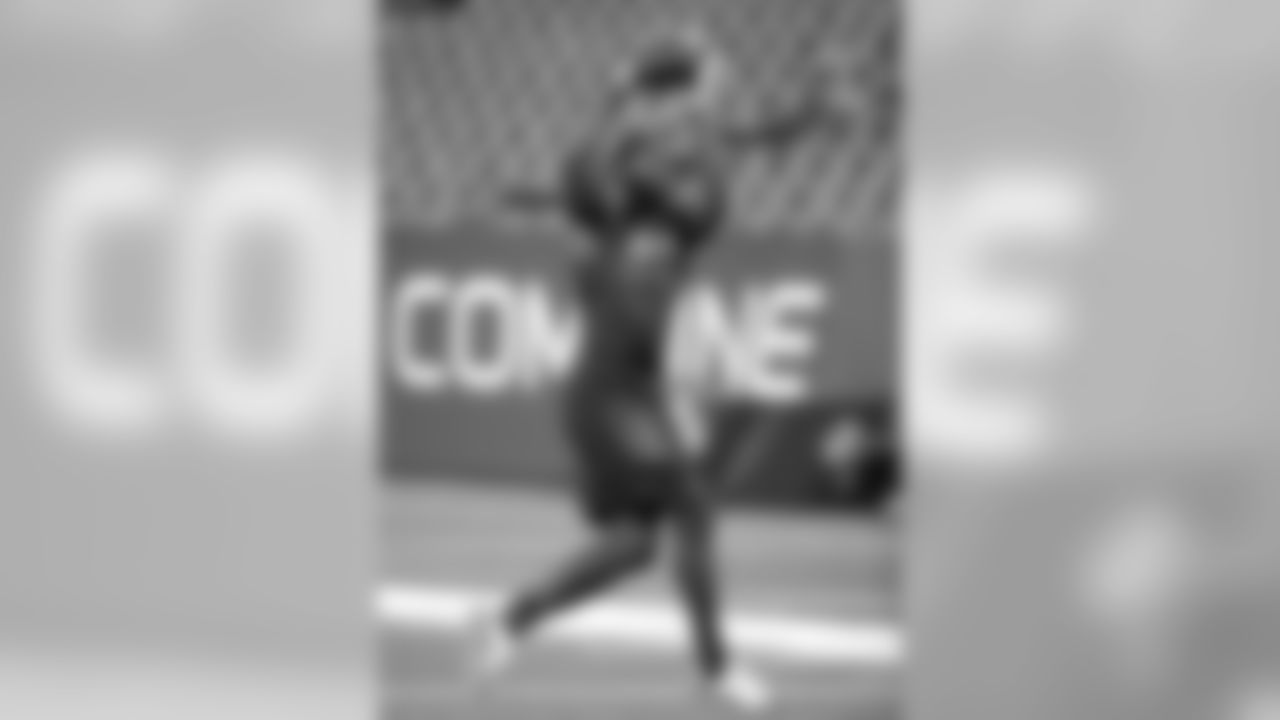
TE Clive Walford (2015)
Q. When you're looking at a potentially great receiver who's getting throws from a college quarterback who kind of doesn't have a clue, what the are the things you watch for to compensate for that and how does that affect your evaluation?**
Mike Mayock:"Oh, yeah. I'll tell you what it is. Forget about the ball for a minute, okay. At the combine, what the scouts and the wide receiver coaches and all are looking for, when DeVante Parker gets up to catch a football from a quarterback he's never seen, they don't really care that much about the football. What they want to see is this guy's explosion coming off the line, how he gets in and out of breaks. Remember, they're running an NFL route tree, three-step, five-step, and seven-step, so that means short, intermediate and deep routes, so you actually get to see a progression of routes from each receiver. So don't even worry about the football. That's kind of an afterthought. What these guys want to see are movement skills. What kind of movement skills does a big guy have? Does the little guy get in and out of his breaks the way he should? How about his burst off the line of scrimmage? And finally, when the ball does come, are you a natural hands catcher."
Q. Who are some deep threats that the teams can look for that go beyond Amari Cooper, DeVante Parker, Dorial Green-Beckham and Kevin White, who are some other wide receiver that's can stretch the field?
Mike Mayock:"I'll give you three of the fastest at the combine, Phillip Dorsett from Miami. He might run sub-4.3. My introduction to him came two years ago at Notre Dame when he dropped two passes on the first series where he was five to ten yards beyond the closest Notre Dame player, and I don't think Notre Dame had ever seen a guy run that fast. He flies and he's gotten more consistent with his hands and route running. This kid can play and pick the top off any zone. Devin Smith, very similar from Ohio State. He's going to run sub-4.35. He tracks the deep ball maybe better than anybody in this draft. And Sammie Cotes from Auburn at 205 pounds is the biggest of the three. The tallest of the three. He's going to run sub-4.4. He flies I just don't know if he catches the ball as naturally as those other two guys."
Q: Could you talk about the difficulty of evaluating pass-rushers? Regardless how you have them ranked and so forth. Just the problem with evaluating them in this process?
Mike Mayock:"It's kind of interesting. If you look at the edge guys going back to 2011, okay, 2011 was a great year. Alton Smith, J.J. Watt, Robert Quinn, Justin Houston, Von Miller, that was 2011. 2012, not so much. Maybe Chandler Jones, maybe Quinton Coples, that's it. 2013, Ziggy Ansah, and look at the other first-round picks in 2013, Dion Jordan, Barkevious Mingo, Bjoern Werner, Jarvis Jones. So that's maybe 1 for 5 in 2013. Last year, look, Mack had a heck of a year. The sixth round pick Lynch had a good year. But jury is out on Clowney, D. Ford, Marcus Smith and Demarcus Lawrence. So it's a hard evaluation. But I'm going to tell you what I said a second ago and just bang the table for it. And that is coming off the edge, first and foremost, you have to be a great pass-rusher or have the ability to become a great pass-rusher. I think when you look at Fowler, Gregory and Ray, all three of them can. The second thing is you've got to be tough enough and big enough to set a physical edge. That's why I get nervous a little bit about Gregory, Ray, Vic Beasley. Let's see what they weigh and what their body types look like. Because in the NFL, you've got to be able to play the run game and go up against those big tackles and guards and hold your own. You get a little nervous. So a guy like Vic Beasley, who is a gifted, gifted pass-rusher, if he's only 230, and doesn't have the explosion to get under people and play with leverage and power, it's hard to say that he's going to translate to the NFL."
**Q. Mike, I wanted to ask you about underclassmen declaring for the draft. After last year, the record is kind of down for numbers. Is that better for colleges or does it not matter?
**
Mike Mayock:"I would say that it really depends on the individual kid. I really root for the kid. I want the kids that have the best opportunity to make the NFL. I think a lot of them are the victim of bad advice these days. Get in the NFL, get your contract now, start the meter going. Don't worry if you're a fourth-round pick or second-round pick, it doesn't matter. Well, it does matter. It matters because the higher you go, the more money is invested in you and therefore the team will give you a deeper opportunity to prove who you are. So on top of that, and I'm not advocating that every kid stays in, trust me. Every kid is different. But if you can stay in, every kid has different financial situations at home, but if you can stay in and get bigger and stronger, become a better football player and enhance your draft status, I think you're better off staying in college. There are certain positions like running back where once you've proven yourself, you probably need to go, and if you're a first-round pick, for the most part, you probably need to go. But I think there are a bunch of kids making bad decisions for the wrong reasons."
Q: I wanted to get back into some of the evaluation process that goes on at the combine. When you look at all of the drills that are going to go on in all the years that you've watched them, which are the ones that are actually most beneficial for evaluating guys during the course of the combine, and which ones might be overrated and just not that valuable at this point?
Mike Mayock:"It's really interesting. Because the drills are the same every year, obviously since Mike Mamula came out of Boston College years ago and was really the first guy that trained for it and kind of went from a who's-he to a top-10 pick for the Philadelphia Eagles, everybody trains for these drills. The scouts like that because that means it's an equal footing. Everybody has got an opportunity to train for it, and you're in the best shape of your life, so let's benchmark everybody on the field on the same day at the same time. So conceptually it makes sense, but sometimes it gets kind of skewed, and obviously the 40 is a big deal. That seems to be the marquee event. I don't really care as much about a 40-yard dash for an offensive lineman. I look at their 10-yard dashes, although it's hard to say that Dontari Poe at 346 pounds running 4.98 is not impressive. I don't think the 40 is that important for offensive linemen and defensive linemen. I think it is very important for skill position people. I think the change-of direction stuff, the short shuttle and the three-cone is important for the linebackers, the defensive backs, the running backs. You get to see quickness, change of direction. You see whether a guy is quicker than he is fast in a straight line, and those are important things. The broad jump and the vertical jump are really lower body explosion, and it's another cross-check. If a guy is a 4.5 40 guy, he probably should be jumping 35 inches in the vert. If he only jumps 30, there's a question why. It all kind of balances out. There's checks and balances everywhere, but I'd throw out some of the stuff, and it's really position oriented, and I think the important thing is after those drills are over and the coaches come out and put them through football drills, I think we really get an opportunity to see one kid after another in their movement skills, and it kind of exposes flaws. If you're a defensive back and you can't open your hips, things like the coaches can see immediately, and you've got 30 defensive backs in a row going in one drill, you can see which ones are natural and which ones aren't, and then you've got to go back--if you put too much on that, obviously, it can't overwhelm the grade you give them on tape, but it's just another cross-check."


























